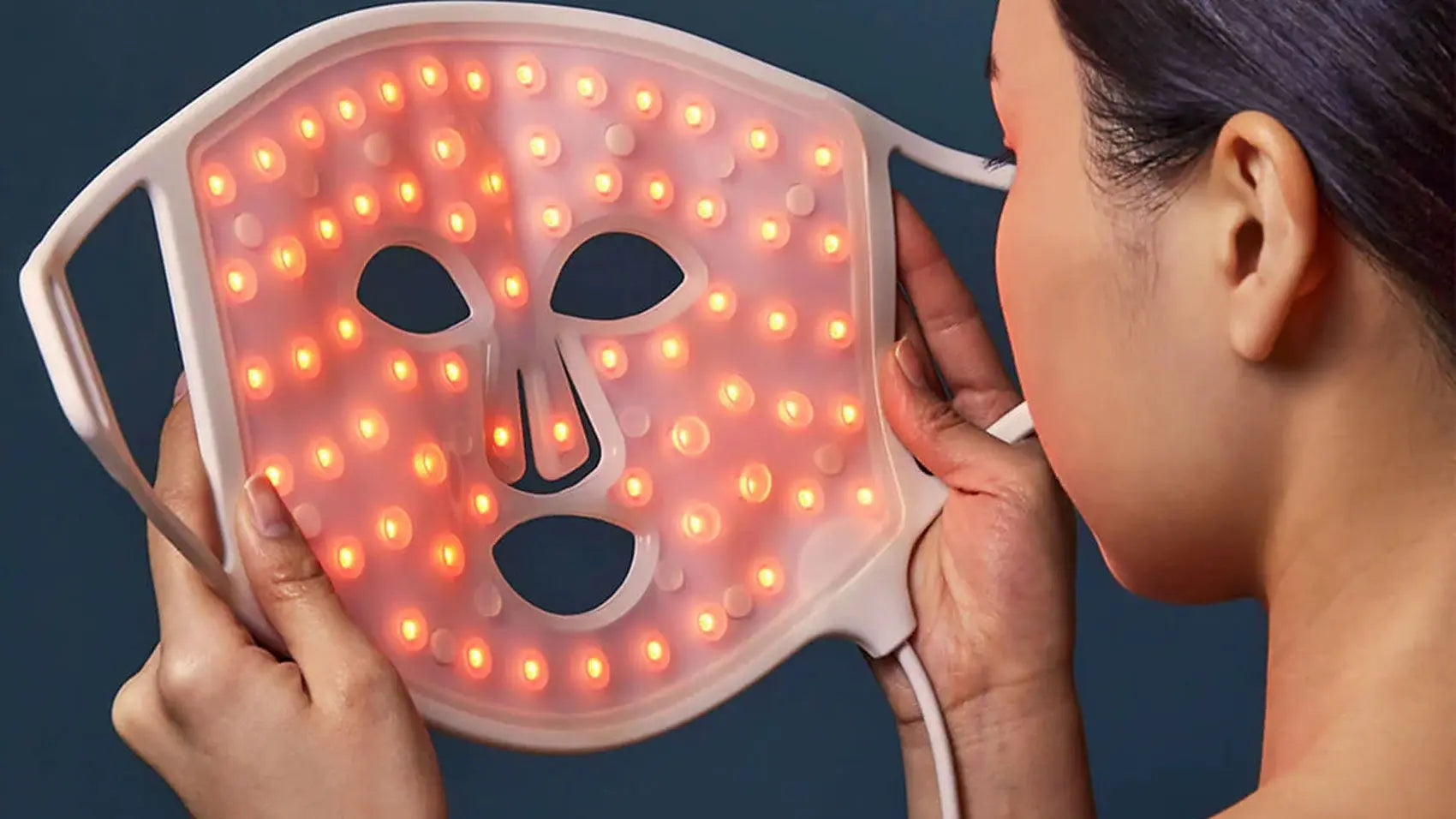Medically Reviewed by Dr. Lisa Hartford, MD
Have you recently noticed fine lines and new wrinkles on your face? These are some of the common aging signs that start occurring in the late twenties and become more pronounced during and after the late 30s and 40s. All these aging signs are due to the reduction of collagen in the skin and lack of regeneration and healing in the tissues.
Many transdermal and external factors contribute to aging signs. Slowing down transdermal healing may cause the cells to stop generating fibroblast activity for collagen replenishment. Besides, external factors such as sun damage, lifestyle, and lack of skin protection may cause early wrinkles.
Fortunately, intervention measures and preventative steps can help in delaying aging signs and diminishing existing ones. The use of microcurrent has become popular due to its effectiveness against wrinkles and fine lines. In addition, it has been studied to offer transdermal regeneration and healing. Keep on reading to learn more in-depth about the microcurrent impact on aging signs.
Understanding Skin Aging
We are familiar with the skin aging process from the outside. A lot goes on inside the skin layers that show up as aging signs. Aging is a gradual process that happens over the years. You may start to see a few fine lines during your 20s and 30s. These fine lines may turn into deep wrinkles, sagging skin, and age spots in the 40s and 50s. Besides, other intrinsic and extrinsic factors impact skin aging, dispensing on an individual.

Different layers of skin, like the dermis, epidermis, and muscles underneath, start to weaken due to sun damage, gravity, age, and genetics. Moreover, lifestyle habits such as smoking and drinking also add to skin damage as they increase free radicals in the body.
The collagen and elastin in the skin also start to deplete as the body ages. Reduction in fibroblast activity is unable to synthesize collagen protein; hence, skin becomes thin and saggy.
One may start to notice saggy jowls, neck wrinkles, crow's feet, and smile lines as aging signs. Some other signs that reflect are slow healing, uneven skin tone, age spots, and hyperpigmentation.
Many people explore various ways to combat these aging signs with both non-invasive and surgical therapies. Choosing non-invasive therapy has negligible downtime and side effects in comparison to going under the knife. We'll be exploring microcurrent non-invasive therapy for those who are looking for an easy facelift.
Impact of Microcurrent Therapy on Aging Signs
Microcurrent therapy is emerging as an effective solution against the visible signs of aging. This non-invasive technique harnesses the power of low-voltage electricity to stimulate facial muscles from the inside. The human body works using bioelectric signals; therefore, microcurrent mimics those signals.
It helps in adenosine triphosphate (ATP) cell growth and collagen development in the dermis, resulting in a range of benefits for people seeking a natural and youthful appearance. ATP works as the primary energy source for cellular functions, including muscle contraction.

The gentle electrical stimulation provided by microcurrent devices triggers a surge in ATP production, allowing the facial muscles to contract more effectively.
One of the primary effects of microcurrent therapy is the revitalization of facial muscles. Over time, as we age, the muscles in our face gradually weaken and atrophy, leading to sagging skin and the formation of wrinkles. As we know, this phenomenon is particularly noticeable in areas like the forehead, chin, and eyelids.
Microcurrent works by facilitating increased cellular activity, which in turn tightens and smoothens these muscles and connective tissues. This "workout" for the facial muscles aims to counteract the natural loss of muscle strength that comes with age, ultimately contributing to a more lifted and rejuvenated appearance.
Furthermore, microcurrent therapy also influences collagen and elastin production, which holds a crucial role in maintaining youthful and vibrant skin. Collagen is the key protein responsible for providing structural support to the skin, ensuring a plump and firm complexion. Since ATP is essential for collagen production, microcurrent treatments indirectly stimulate collagen synthesis.
As a result, the skin becomes more resilient and better able to resist the formation of fine lines and wrinkles. This dual action on both muscle and collagen levels makes microcurrent therapy a comprehensive approach to addressing the multifaceted aspects of aging skin.
Is microcurrent therapy safe?
One of the significant advantages of microcurrent therapy is its safety and effectiveness. This technique has been in use for decades, notably in physical therapy, attesting to its reliability and minimal risk.
The controlled application of low-voltage electricity ensures that the treatment is gentle, healing, and non-invasive, making it ideal for individuals seeking to combat the effects of aging. The current applied is small and non-detectable; hence, it causes no pain.
Microcurrent is not recommended for pregnant people or those with a pacemaker as it may intervene with the condition.
Microcurrent Facial for Transdermal Regeneration and Healing
In a recent study, researchers investigated the potential anti-inflammatory effects of microcurrent therapy. The study involved twenty-two subjects who were exposed to ultraviolet irradiation in order to induce inflammation in two distinct areas of the lumbar region.
During the study, one of these regions received a microcurrent treatment with an intensity of 50 μA. Following the treatment, the researchers compared the healing efficacy of the wounds, and they observed that the wounds subjected to microcurrent therapy healed at a faster rate.
Moreover, it was noted that electrical stimulation also exhibited antibacterial properties, primarily due to its ability to reduce inflammation. This effect can be attributed to the positive polarity of the electrical field, which attracts both gram-negative and gram-positive microbes. Consequently, this phenomenon supports the activity of keratinocytes, contributing to wound healing.
In summary, the study's findings suggest that microcurrent therapy triggers an anti-inflammatory response and enhances the process of wound recovery. These insights hold promise for potential applications in clinical settings.
Exploring At-Home Microcurrent Therapy
At-home facial rejuvenation therapies are gaining popularity due to their cost-effectiveness and time-saving benefits. They are easy to do at home with minimal time and equipment. When choosing an at-home microcurrent device, it's ideal to consider safety and effectiveness. Getting a premium professional-grade device will ensure skin tightening and safe treatment.
We recommend using the EvenSkyn Phoenix Face Lifting Microcurrent Bar. The Phoenix is an innovative tool that seamlessly combines the benefits of microcurrent technology with the soothing massage action of four precisely positioned rollers. This wand is powered by solar and artificial light sources.

Its four rollers are strategically set at a 115-degree angle, ensuring optimal skin contact and facilitating a deep kneading action. This gentle but effective massage enhances blood circulation and improves skin texture and firmness.
Beyond its massage capabilities, it also excels at reducing puffiness, inflammation, and swelling. The uni-directional rollers actively target these concerns, providing relief from the visible signs of fatigue and daily stresses.
One of the key advantages of the wand is its suitability for daily use. Its microcurrent feature works at a safe and comfortable 15 A level, ensuring a seamless and enjoyable experience.
As you continue to incorporate microcurrent massager into your skincare regimen, you may witness transformative results. Overall, the skin may appear more even, contoured, and noticeably firmer, reflecting a rejuvenated radiance.
Wrapping Up
In conclusion, microcurrent therapy offers a promising solution for those looking to address the signs of aging without using surgical interventions or harsh chemicals. By stimulating facial muscles, boosting ATP production, and encouraging transdermal collagen synthesis, microcurrent facials provide a natural and gradual lift to the face, resulting in a more youthful and radiant appearance.
As the field of aesthetic treatments continues to evolve, microcurrent therapy stands out as a safe and effective option for a non-surgical skin rejuvenation approach. With regular use, you may expect an improvement in the mild wrinkles appearance and fine lines. Overall, the skin will feel rejuvenated and firm.
References:
- Yu C, Hu ZQ, Peng RY. "Effects and mechanisms of a microcurrent dressing on skin wound healing: a review." Mil Med Res. 2014 Nov
- Mehrabani D, Manafi N. "Role of cultured skin fibroblasts in aesthetic and plastic surgery. World J Plast Surg." 2013 Jan
- Chow J. Wireless "Microcurrent-Generating Antimicrobial Wound Dressing in Primary Total Knee Arthroplasty: A Single-Center Experience." Orthop Rev (Pavia). 2016 Jun
- Fatemeh Saniee, Hamid Reza. "Consider of Micro-Current's effect to variation of Facial Wrinkle trend, Randomized Clinical July 2012" Life Science Journal
- Holzer AM, Granstein RD. "Role of extracellular adenosine triphosphate in human skin." J Cutan Med Surg. 2004 Mar-Apr
- Flament F, Bazin R, Laquieze S, Rubert V, Simonpietri E, Piot B. "Effect of the sun on visible clinical signs of aging in Caucasian skin." Clin Cosmet Investig Dermatol. 2013 Sep
- Clatici VG, Racoceanu D, Dalle C, Voicu C, Tomas-Aragones L, Marron SE, Wollina U, Fica S. Perceived Age and Life Style. "The Specific Contributions of Seven Factors Involved in Health and Beauty. Maedica" (Bucur). 2017 Sep
- Duscher D, Trotsyuk AA, Maan ZN, Kwon SH, Rodrigues M, Engel K, Stern-Buchbinder ZA, Bonham CA, Barrera J, Whittam AJ, Hu MS, Inayathullah M, Rajadas J, Gurtner GC. "Optimization of transdermal deferoxamine leads to enhanced efficacy in healing skin wounds." J Control Release. 2019 Aug
- Kolimechkov S, Seijo M, Swaine I, Thirkell J, Colado JC, Naclerio F. Physiological effects of microcurrent and its application for maximizing acute responses and chronic adaptations to exercise. Eur J Appl Physiol. 2023 March









Leave a comment
All comments are moderated before being published.
This site is protected by hCaptcha and the hCaptcha Privacy Policy and Terms of Service apply.